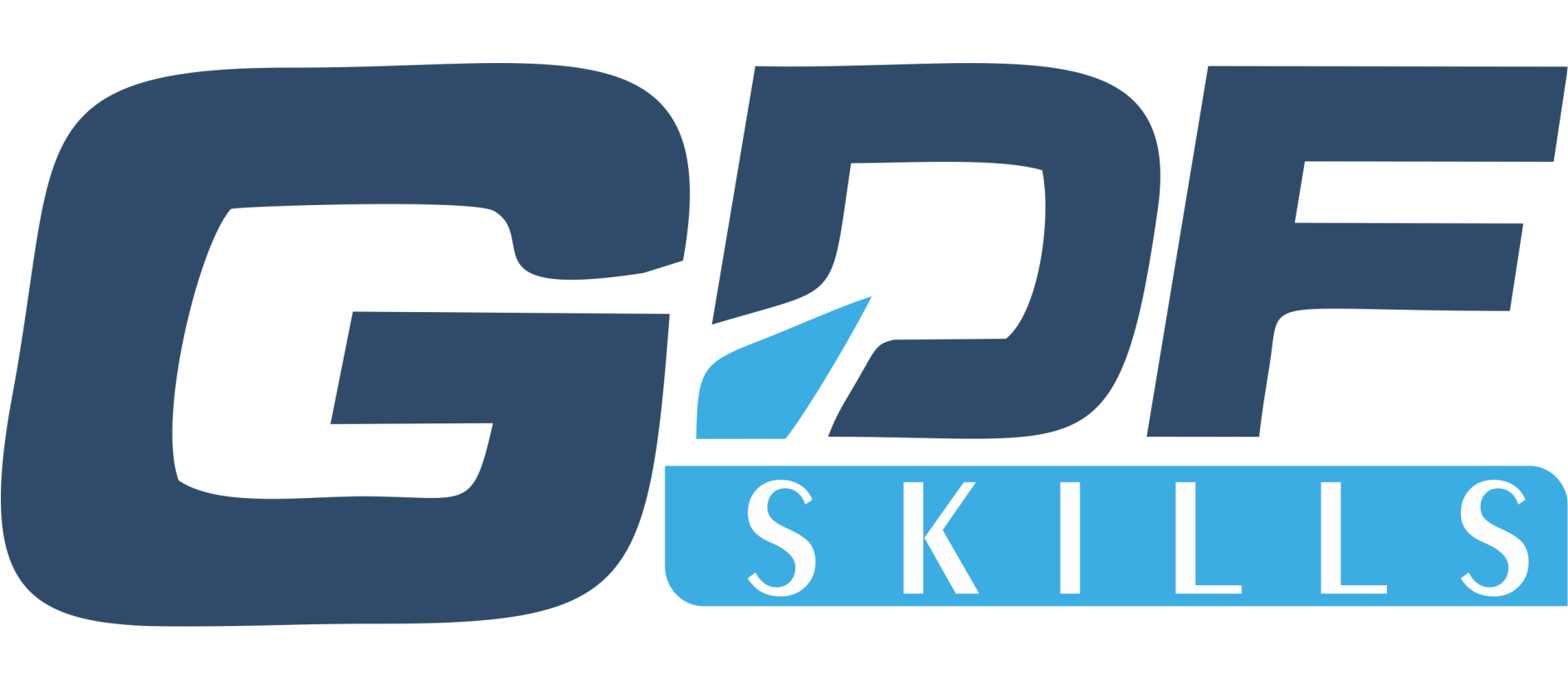GDF Editorial Fri, 05/15/2020 - 16:46
It would be an understatement to say that Technology changes at a rapid pace. As per Moore’s law, the computer processing speed doubles every 18 months. This increasing sophistication in computers has been facilitated by the introduction, and in some cases, the constant evolution of programming languages. To boil it down to finer details, it’s the code that instructs a machine of executing an action. Just as machine hardware continues to become smarter, so do the programming languages. As a result, we see fewer last years languages adopted hesitatingly, while many newer ones are on the rise and built on the shortcomings of their predecessors. Therefore, when the question comes, “which coding languages to learn in 2020”, the answer should be future-headed with a view of the past.
- Python
- Python programming is easy to learn with the syntax being really short. Due to simple lines of code, developers can edit and modify programs rather easily and run tests.
- Python programming is easy to learn with the syntax be>It supports multiple operating systems that include Windows, Linux, and iOS.
- Python programming is easy to learn with the syntax be>As it is a high-level language, code can be created on one system and run on a second one.
- Python programming is easy to learn with the syntax be>Though it supports the Android operating system as well but loosely resembles mobile computing.
- Python programming is easy to learn with the syntax be>There are over 200 standard modules in its library but speaking of third party modules, the sky is the limit.
- Python programming is easy to learn with the syntax be>Python frameworks integrate easily with other programming languages due to which software developers find it effortless to scale complex applications.
- Python programming is easy to learn with the syntax be>The fact that Python is a general-purpose, allows it to do complex ML (Machine Learning) tasks. As a result, the coders can focus on building prototypes that facilitate testing for machine learning programs.
- Python programming is easy to learn with the syntax be>It fits perfectly into the ongoing IT Ops shift towards FLOSS i.e. Free-Libre/Open Source Software. In simple terms, it is free to distribute, tweak the original code and customize.
- Java
- Its Write Once Run Anywhere feature allows the code to be originally prepared on one machine and run on another.
- Its popularity can be understood by the fact that Java was Google’s choice for developing applications for Android at the time of its launch.
- Java comes with automatic memory allocation and garbage collection, features that ensure sufficient CPU memory for use by other applications.
- Java’s security manager feature, and the exclusion of explicit pointer, make it a secure language to code in.
- It is in Java that developers find extensive APIs with which you can initiate a variety of tasks such as networking, database connection etc.
- With distributed computing, Java programming allows information exchange between multiple computers without the need to develop additional APIs.
- JavaScript
- It is used to create responsive elements on web pages that include animations, games, menus or video players.
- It would not be wrong to say that JavaScript powers the front end of a web page. Yet the applications of JavaScript are not restricted to that.
- Its use is being extended to back ends, especially in the case of web and server apps. Not just that, mobile apps are also being created with JavaScript.
- With the introduction of frameworks such as React and PhoneGap, JavaScript can be used to create mobile apps.
- Vue, Angular, and React Native are also JavaScript-based fomenting its significance. Node.js is an open-source, runtime environment based on JavaScript.
- Go Programming Language
- Development efforts behind creating Go wanted to retain useful characteristics such as static typing, runtime efficiency, networking, multiprocessing, and readability/usability of code.
- Go displays large data sets in an easy to understand workflow. Its’ most important feature is its concurrency, the ability of a program to run multiple tasks simultaneously. The tasks, although part of a single, larger program run without affecting each other.
- When working with other programming languages, there is a considerable dependency on third-party packages for components. Go eliminates this outward reliance with a powerful standard library.
- On top of that, type safety, garbage collection and dynamic typing add to the lure of Go for coders. Program builders share their work on GitHub to encourage knowledge transfer for the online community.
- R Programming Language
- R libraries are utilized to create production level statistical analysis represented with visually attractive designs making quick work of data visualization.
- Data analysis could occasionally involve the code to interact with databases, which is no problem for R as it has multiple packages enabling interoperability.
- The comprehensive development environment provided by R makes a default choice for software development.
- R can also be applied to create web apps. This motive is achieved vis-à-vis its Rshiny packages.
- This programming language can also be used for distributed computing, wherein the tasks are delegated to separate nodes (computing machines) to optimize processing time. Since R is an interpreted language, it doesn’t need a compiler.
- R is also used in machine learning for exploring data. It can be synchronized to work with data processing technologies such as Apache Hadoop and Spark.
- Swift
- It’s built on fundamentals of Objective C. Objective-C offers flexibility, dynamic dispatch, extensible programming and late binding but posed performance and security concerns.
- Swift is designed as a solution to address these problems. Programming on Swift is flexible and pretty secure.
- Swift is faster compared to C, Objective C and C++. You can write new modules in Swift that integrate with existing Objective-C codebases. Server-side Swift can be used to integrate with any technology.
- It even allows developers to use emoji in the code.
- The syntax is very close to spoken English and easy on the eyes to read and simple for beginners to learn. It prevents type errors in the code.
- Swift offers automatic memory management and error handling. Just like Python, it is highly scalable and allows adding new features to pre-existing code.
- Kotlin
- Just like Apple built Swift mitigating the shortcomings of Objective-C, so did Google, only in this case kotlin sprouted from the loopholes of Java.
- Ever since its debut in 2011, Kotlin has continued to grow a strongly-knit loyal base with the developers realizing its advantages over Java. Key-value additions from a developer-perspective include operator overloading, null safety, and data classes to name some.
- Kotlin offers a lean syntax that is easy to write and grasp.
- This translates into code volumes that are 20% shorter than Java, making the programming experience developer-friendly and efficient.
- Java codes can run on Kotlin and vice-versa making it immensely interoperable.
- The makers of Kotlin package this programming language with an advanced compiler that maintains checks and balances at compile and runtime.
- Advertised as the language for Android development, it comes with a lazy-loading feature that minimizes the load-time of an app, improving the user experience.
- Scala
- It is both an object-oriented and a functional programming language. Scala is a static type language i.e. variables are declared and defined.
- This allows the compiler to know the value of the variable at compile time. In other words, it reduced performance issues at runtime.
- It was built to run on Java Virtual Machine. This makes it integrate with Java rather effortlessly and each language can run on another’s Java Development Kit (JDK).
- Amateur programmers rejoice with the fact that Scala’s syntax is easy to understand.
- It offers user-friendly compilations options with the code readily executable on web browsers with Scala.js compiler.
- Scala programming language has a unique feature called Lazy Evaluation. This technique evaluates a value only when there is a need, making Scala fast and efficient.
- With features such as Future and Promises, data can be processed in parallel due to which this new age programming language finds abundant applications in Big Data analytics.

Python was created in 1991 by Guido Van Rossum. It was introduced keeping simplicity and beautification in mind.
Python programming has been extensively used by leading tech corporations of the world, some of which include Google, Facebook, Dropbox and IBM.

Java programming burst on to the tech scene in 1996 and since then has retained its position time and again to be a bankable choice for enterprise application development. An attributable reason for this is because Java is stable.
Multithreading lets this programming language reduce lag at runtime. Such features and staunch online community support guarantee plenty of opportunities to grow ones’ career. For a computing language, Java is as good as they come.

JavaScript lies at the core of the World Wide Web as one of the three main languages that enable the working of web pages. The other two being HTML and CSS. Therefore, it is highly recommended to learn JavaScript in 2020.
Present-day unicorns such as Uber, PayPal, and Netflix use Node.js extensively. To learn JavaScript would be a wise investment of your time with exponential upsides from an employment point of view.

Go language was developed at Google to overcome the failings of other coding languages used by developers. In doing so, they wanted to resolve their collective dislike for C++ programming techniques.

R programming for data science is the new rage. Additionally, R programming language is one of the most profoundly used computing languages for machine learning. As it is open-sourced, you can fit it to your project requirements and easily add packages for extra features.
And if these features weren’t enough, you can leverage R to create reports in a format of your choosing be it a PPT or word doc.

Swift programming language was developed by Apple Inc. and launched in 2014 to provide a single platform with diversified applications from desktop and mobile apps to cloud services and systems programming.
Development times can be put on fast-track mode if Swift is used for both front end and back end, making code sharing easier to undertake.

Few were surprised when on May 7, 2019, Google took to stage and declared Kotlin as its preferred language for Android development.
Kotlin is license-free, open-sourced and encourages community exchange of ideas for development.

Scala was introduced to computing aficionados in 2004 to address the inadequacies of Java. Safe to say, in the last 16 years it has come a long way, all though not dethroning Java from its immortal pedestal, but yes gaining respect from developers.
Billion-dollar businesses such as Netflix, LinkedIn and Twitter use Scala in their applications. The decision to choose a particular language should be guided by your motive. The rising trend of open source programming languages has young coders learning the ropes with Swift, Kotlin, Scala & R. But this doesn’t mean other programming languages (excluding this list) are not important. Honorable mentions include Rust programming language, Ruby programming language, PHP, HTML and the C/C++.


